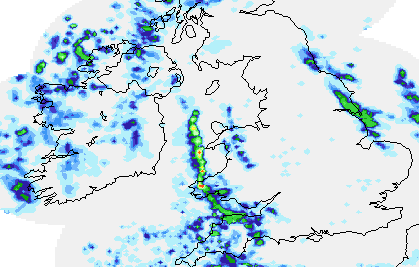From time to time, the climate of an area generates events that are so unique to that area that they are named after the area. For instance, low pressure systems that form over western Canada and make a rapid beeline for the east coast of the United States are called Alberta Clippers and in the same vein winds that blow onshore in California causing a massive heat up (and as a result pose a threat to forest fire management) are known as the Santa Ana Winds. Well, here in the UK and specifically in Wales we have our own locally named weather event.
If the winds blow from the north (as they have done for over a week now) the way that the United Kingdom is aligned means that those winds pass between mainland Scotland and the Western Isles and then get funnelled by the gap between the coast of Antrim and Dumfries and Galloway. As they continue their way down (picking up moisture from the Irish Sea on the way) they meet the Isle of Man are get split into two directions. One direction is through the Cheshire Gap or as it is more commonly known the Cheshire Plains (a relatively flat expanse of lowland almost entirely within the county of Cheshire in North West England. It extends from the Mersey Valley in the north to the Shropshire Hills in the south, bounded by the hills of North Wales to the west and the foothills of the Pennines to the north-east) where if the winds are strong enough allow that moisture to drift towards Birmingham and produce snow over the Staffordshire moorlands. The other section continues southwards and reaches the western coast of Wales and the counties of Cornwall and Devon producing what is known as a “Pembrokeshire dangler” and for the last couple of days that is precisely what we have been having (as seen by these radar images from the Met Office)

And given the fact that it is going to remain cold for the next several days, it is not without the realms of possibility that the dangler could give Ceredigion its first snowfall since 2013

Harry, it is great to read your blog and learn more about the weather in the U.K., especially local patterns as your current post includes. I look forward to your future postings.
As an FYI, Southern California’s Santa Ana winds are offshore, as they are further north in the San Francisco Bay Area, where they’re known as Diablo Winds (I believe named after nearby Mt. Diablo). The inland air heats up and dries as it flows down the hills toward the coast.